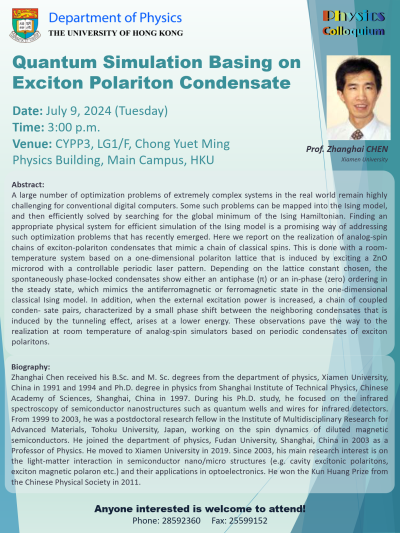Abstract
A large number of optimization problems of extremely complex systems in the real world remain highly challenging for conventional digital computers. Some such problems can be mapped into the Ising model, and then efficiently solved by searching for the global minimum of the Ising Hamiltonian. Finding an appropriate physical system for efficient simulation of the Ising model is a promising way of addressing such optimization problems that has recently emerged. Here we report on the realization of analog-spin chains of exciton-polariton condensates that mimic a chain of classical spins. This is done with a room-temperature system based on a one-dimensional polariton lattice that is induced by exciting a ZnO microrod with a controllable periodic laser pattern. Depending on the lattice constant chosen, the spontaneously phase-locked condensates show either an antiphase (π) or an in-phase (zero) ordering in the steady state, which mimics the antiferromagnetic or ferromagnetic state in the one-dimensional classical Ising model. In addition, when the external excitation power is increased, a chain of coupled conden- sate pairs, characterized by a small phase shift between the neighboring condensates that is induced by the tunneling effect, arises at a lower energy. These observations pave the way to the realization at room temperature of analog-spin simulators based on periodic condensates of exciton polaritons.
Biography
Anyone interested is welcome to attend.





